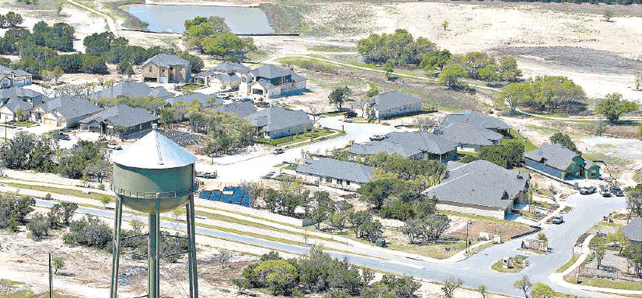Folks Flocking to Area Counties

Three northern neighbors of Bexar County continue to draw new residents at a pace that ranks them in the nation’s 10 fastest growing larger counties, according to U.S. census estimates released Thursday.
Kendall, Comal and Hays counties have made the top 10 list in recent years with fair regularity, so it didn’t surprise officials there who deal with the resulting traffic congestion, new rooftops and increased demand for public facilities and services.
“There’s no doubt it’s challenging,” said Darrel Lux, county judge in Kendall County, whose population, census data show, jumped 5.16 percent between July 1, 2015 and July 1, 2016.
That earned it runner-up status nationwide: the second-fastest-growing county in the United States among those with more than 10,000 residents.
“We are an extremely desirable place to relocate,” Lux said, citing quality schools and the still-mostly-unpaved Hill Country setting as drawing cards for the county of about 42,540 residents that borders Bexar County to the northwest.
Despite the relatively high percentage increase, Lux noted, the number of new Kendall County residents — estimated at 2,088 in that period — was far fewer than the 9,896 new residents in Hays County, third on the list with a 5.09 percent jump, and Comal County’s 5,675 newcomers, who made it sixth on the list with an increase of 4.4 percent.
Remote San Juan County in southeastern Utah’s red rock canyon country grew by only 1,088 residents, but it was enough to record a 7.56 percent increase and put it at the top of the national list.
The county, one of the state’s poorest, might be drawing retirees but officials weren’t sure what caused the influx, the Deseret News reported.
“If you take a picture from the sky, a whole lot of Kendall County is still rural,” Lux said. ”The biggest challenge is coming up with the right mix of businesses and residential developments, and obviously mobility is probably our major concern now.”
State Demographer Lloyd Potter sees the repeat appearances by area counties on the list in recent years as “an exclamation point” on the enduring appeal of the San Antonio area.
“It’s not a surprise because we know they’ve been growing, but having two counties up there close to the top leads me to believe the greater San Antonio area is catching up with the growth we’ve seen in other urban corridors, like around Houston and Dallas,” said Potter, a professor of demography at the University of Texas at San Antonio.
Bexar County did not make the Top 10 — it didn’t even make the Top 100 — but it ranked No. 7 on a more arcane list, the “Largest Gaining Counties (Numeric Change).” It showed Bexar County drew 33,198 new residents during the 12 months that ended July 1, bringing its estimated population to 1,928,680, a 1.75 percent increase.
The vast majority of new residents in Comal, Hays and Kendall counties moved from elsewhere in the United States, the data show. Of the three, Hays County welcomed the most immigrants from other nations, at 177.
Echoing Lux’s remarks, Comal County Judge Sherman Krause said keeping up with the demand for new infrastructure, especially roads, is the most challenging aspect of dealing with rapid population growth.
Comal County, like Kendall County, now is in the process of building a new Sheriff’s Department and jail, major projects funded by bond elections.
Among the greatest concerns, Krause said, is assuring there are adequate water supplies to serve future generations.
“It’s something that we constantly talk about on the county level,” said Krause, who’s seen Comal County add about 100,000 residents since he graduated from high school there in 1981.
“We’ve still got that same character, it’s just a lot more people, a lot more traffic on the roadways, longer lines when you go to renew your vehicle registration and things like that,” he said. “Most people know that it’s a popular place, and that people want to be here, so we’re going to continue to grow.”
Helping create local jobs for new residents is a major goal of Mike Meek, president of the Greater New Braunfels Chamber of Commerce.
“People are moving here for the good schools and the beautiful Hill Country. We want them not only to sleep here, but also to work here,” he said. “It’s hard for the city and the county to fund services just on (residential) rooftops. They also need commercial development.”
Hays County’s increase ranks it as the nation’s fastest-growing county with a population in excess of 100,000, Hays County Commissioner Will Conley noted.
“We see the benefits and the pressures of this level of growth on a daily basis, and there’s not one place in our community where I’ve not seen a change,” Conley said. “There is a lot of great opportunity that comes with that, a lot of economic and job opportunity, and there also are challenges that come with that, too, obviously.”
He expressed pride in how the county and individual communities have coped with the growth, saying: “We’ve been able to maintain our diversity and our culture.”
zeke@express-news.net Staff Writer Peggy O’Hare contributed to this report.